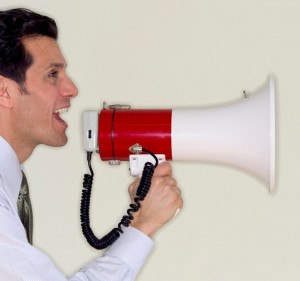Going to sling one final post at you with information on the condition known as “sensory defensiveness.” If you haven’t heard about this condition, you can find the basics in my introductory post on what it means to be sensory defensive. The first batch of tips and tools are in this Part I post.
 Today, I’m covering the last part of Dr. Sharon Heller’s book Too Loud, Too Bright, Too Fast, Too Tight. The reason I’ve devoted three posts to sensory defensiveness is because I suspect there are more of us walking around with it than we realize. I hadn’t heard of it until recently, but boy, do some of the triggers resonate! And as I mentioned in Part I, even if you’re not sensory defensive, Dr. Heller’s tools are helpful all the way around for living well, and living well means living healthy and living long.
Today, I’m covering the last part of Dr. Sharon Heller’s book Too Loud, Too Bright, Too Fast, Too Tight. The reason I’ve devoted three posts to sensory defensiveness is because I suspect there are more of us walking around with it than we realize. I hadn’t heard of it until recently, but boy, do some of the triggers resonate! And as I mentioned in Part I, even if you’re not sensory defensive, Dr. Heller’s tools are helpful all the way around for living well, and living well means living healthy and living long.
These points are taken from the section titled “Removing Treatment Obstacles.”
- Your GI tract is highly sensitive (over 30 gut hormones!), and certain foods can exacerbate sensory defensiveness: caffeine, simple sugars, starches and high glycemic foods, to name the biggest culprits. Food allergies may also be lurking. To test for this, start by eliminating all sugar, alcohol, wheat, dairy and corn from your diet for three weeks, then slowly reintroduce them, one at a time. You might be surprised by what you find; I was.
- Sensory defensives often suffer from leaky gut syndrome, candida overgrowth, and acidity. Maintaining balance in the gut is vital for modulating your nervous system and managing sensory defensiveness. Remember the song that goes “hip bone is connected to the thigh bone,” and then take it even further.
- In the chronically tense body that is the bane of most sensory defensives, breathing tends toward fast and shallow. Practice breathing from the diaphragm instead of the chest. To go a bit deeper (pun intended), look into special exercise that use alternate nostrils, Pranayama or Ujjayi breathing. There are lots of techniques to try, and all will lead to a more relaxed mind and body.
- Tense body often means poor posture. Does your neck hurt? Tight shoulders? Do you feel frozen in your current posture? Heller recommends a variety of bodywork: craniosacral therapy (especially good for TMJ), neurocranial restructuring, Tragerwork and Rolfing. (She also mentions massage, but I’ll tell you from firsthand experience, massage rarely results in permanent structural change the way these other modalities can.)
- After bodywork, how about retraining your movement to match your new posture so the results stay with you forevah? Some to check into are Feldenkrais, Hanna Somatic Education, the Alexander Technique, yoga, Qi Gong, and bioenergetics. Spoiler: somewhere along the way, you might be told to ditch those four-inch stilettos. Consider yourself forewarned.
 Another avenue for deep relaxation is mind-body practices. Progressive relaxation, where you start at your head or feet and then clench and release each major muscle group one at a time is a good one. Another is meditation, where you move your focus away from thoughts and onto sensations. Both have major medical results: lower blood pressure, a slower heart rate, relaxed muscles, and slower brain waves. Bonus: you can practice them at your desk, on the subway, or during the Annual General Meeting of <insert organization of your choice here.>
Another avenue for deep relaxation is mind-body practices. Progressive relaxation, where you start at your head or feet and then clench and release each major muscle group one at a time is a good one. Another is meditation, where you move your focus away from thoughts and onto sensations. Both have major medical results: lower blood pressure, a slower heart rate, relaxed muscles, and slower brain waves. Bonus: you can practice them at your desk, on the subway, or during the Annual General Meeting of <insert organization of your choice here.>- Hypnotherapy, where you are deeply relaxed and open to suggestion, can be effective in desensitizing a sensory defensive to fear, phobias and pain. Look for someone trained in analytical hypnotherapy; this approach regresses you so you can tap into buried memories or emotions that might be playing a role in your stimuli responses.
Some of the practices listed above might be foreign and freaky sounding to you, as they were to me. I felt it was important to list them because each one works differently, although sometimes the differences are subtle. But because they are different, they also work well together, as part of an integrated approach. Just trust me on this. The more you play in this sandbox, the more you’ll find yourself dipping your toes into multiple pools (and yes, I freaking LOVE mixing my metaphors).
If your mind and body are suffering a little or a lot, these practices are worth exploring. And don’t be discouraged if sometimes it feels like the changes are too big to handle. Bite off a bit at a time, and course correct as needed. Wellness is a continual journey, because your body is always changing.
Are any of these tools your personal faves, or on your to-do list? What has your experience with them been?


